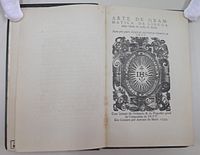
Back Tupí Afrikaans لغة توبي Arabic Llengua tupí Catalan Tupi-Sprache German Tupia lingvo Esperanto Tupí antiguo Spanish Tupi ancien French Lingua tupí Galician Harshen Tupi Hausa טופי עתיקה HE
This article has multiple issues. Please help improve it or discuss these issues on the talk page. (Learn how and when to remove these messages)
|
| Tupi | |
|---|---|
| Old Tupi, Ancient Tupi, Classical Tupi, Tupinambá | |
 | |
| Native to | Coastline of Brazil |
| Ethnicity | Tupinambá, Tupiniquim |
| Era | 16th century-present; developed into Nheengatu |
Tupian
| |
| Latin | |
| Language codes | |
| ISO 639-3 | Variously:tpn – Tupinambátpk – Tupiniquimtpw – Old Tupi (this code has been merged into tpn since 2022) |
| Glottolog | tupi1287 |
Old Tupi, Ancient Tupi or Classical Tupi (Portuguese pronunciation: [tuˈpi]) is a classical Tupian language which was spoken by the indigenous Tupi people of Brazil, mostly those who inhabited coastal regions in South and Southeast Brazil. In the words of Brazilian tupinologist Eduardo Navarro, "it is the classical indigenous language of Brazil, and the one which had the utmost importance to the cultural and spiritual formation of the country".[1]
Old Tupi belongs to the Tupi–Guarani language family, and has a written history spanning the 16th, 17th, and early 18th centuries. In the early colonial period, Tupi was used as a lingua franca throughout Brazil by Europeans and Amerindians, and had literary usage, but it was later suppressed almost to extinction. Today, its sole living descendant is the Nheengatu language.
As the most important native language of Brazil, it is the origin of most city names of indigenous origin (Pindamonhangaba, Ubatuba, Botucatu, Jacareí). It also names several plants and animals, and many proper names are tupi names, such as Moacir, Iara, Iracema and Jandaia. It has a rich literature, which includes catechisms, poems and plays.[2]
The names Old Tupi or Classical Tupi are used for the language in English and by modern scholars (it is referred to as tupi antigo in Portuguese). It has previously been known, in Portuguese, as língua brasílica "Brazilian language".
- ^ Navarro, Eduardo de Almeida (2013). Dicionário de tupi antigo: a língua indígena clássica do Brasil (in Portuguese) (1st ed.). São Paulo: Global. ISBN 978-85-260-1933-1.